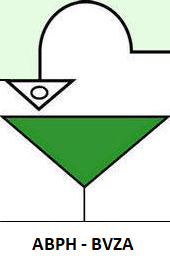Approach
To achieve these objectives, a two-phased study was set up:
Developing a cost model for a clean room for multiple operating scenarios
In the first phase, a cost model based on the Time/Process-Driven Based Costing method was developed. In this model, several scenarios were integrated to assess the impact that the various quality standards (zones A, B, C or D for preparations, LAF cabinets or isolators) have on the infrastructural and operational costs and organization of a clean room.
This model was developed based on data collected from five hospitals that participated in the study: Cliniques Universitaires Saint-Luc, AZ Groeninge, Grand Hôpital de Charleroi, AZ Sint-Blasius, and Clinique Saint-Joseph de Vivalia.
This model allows for assessing the investment and operating costs of a clean room, depending on the annual amount of preparations per hospital.
Applying the model to all Belgian hospitals and evaluation of operating & financing scenarios
In this phase, a national survey was executed to collect actual data from each hospital. By combining this data and the cost model for a clean room built in the previous phase of the study, different funding and operating scenarios including all Belgian hospitals were analyzed.
Within these operating scenarios, the merging of clean rooms per group of hospitals was assessed and made available in several options.
These simulations were translated into both quantitative results (investment and operating costs) and qualitative results (risks, dependencies) on a national level.
Result
This study has provided the following information:
- Different costs related to clean rooms due to PIC/S regulations: The study provided an overview of the impact of PIC/S regulations on the organization, investments, and operating costs related to clean rooms. These insights enable us to understand the impact for hospitals.
- Funding & operating scenarios and recommendations: Application of the cost model to all Belgian hospitals, under different scenarios, has helped to provide a thorough analysis of the impact of PIC/S regulations and various means to reduce their financial impact on the sector and authorities (selected quality, production planning, groups of clean rooms).
- This result was presented to and used by the Ministerial Office of Public Health to support the implementation of the PIC/S regulations and how this will be funded.
- This study has also been used by several organisations, including Zorgnet Icuro, to formulate an opinion on the PIC/S regulations and their implementation in Belgian hospital pharmacies.




